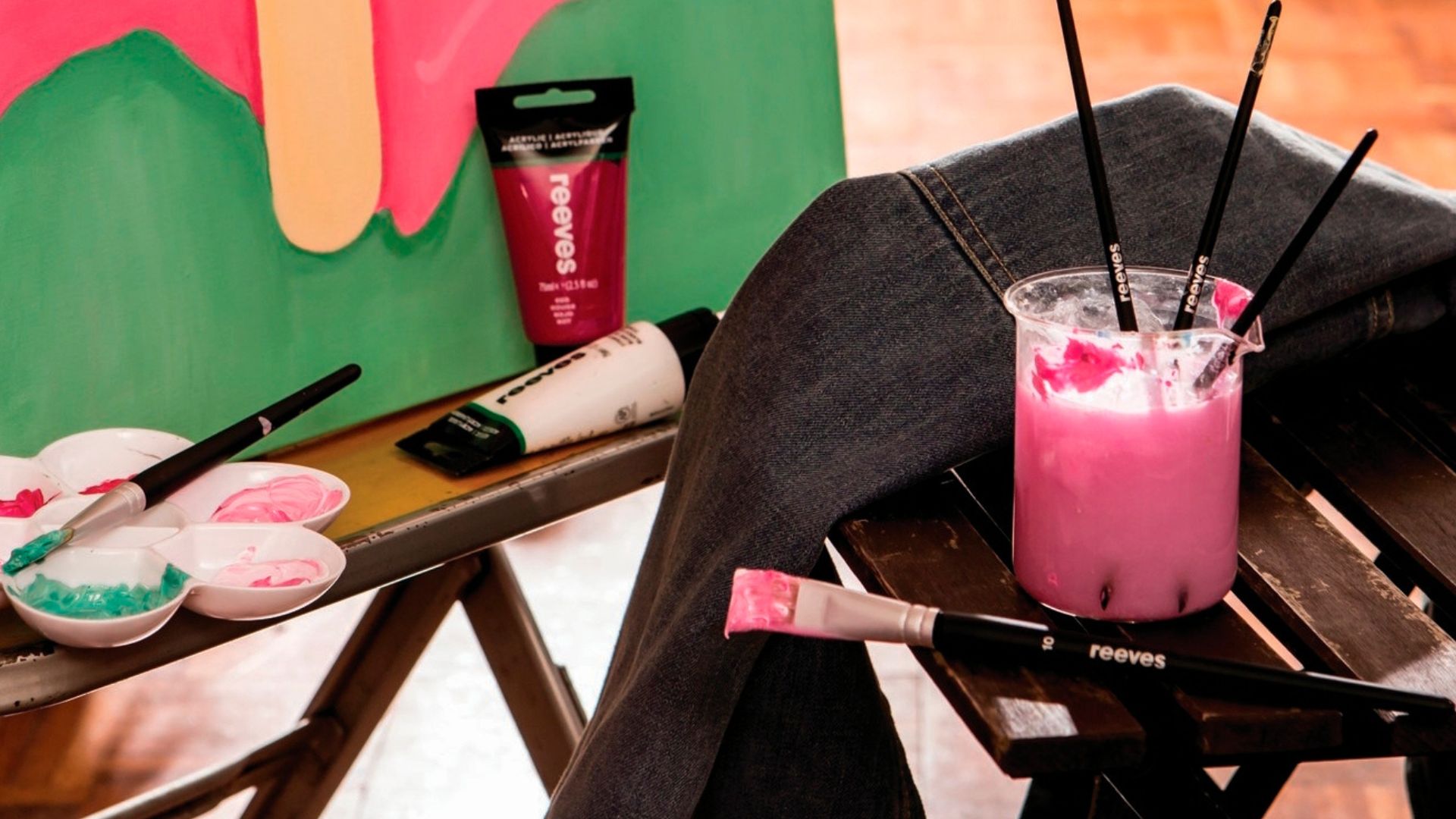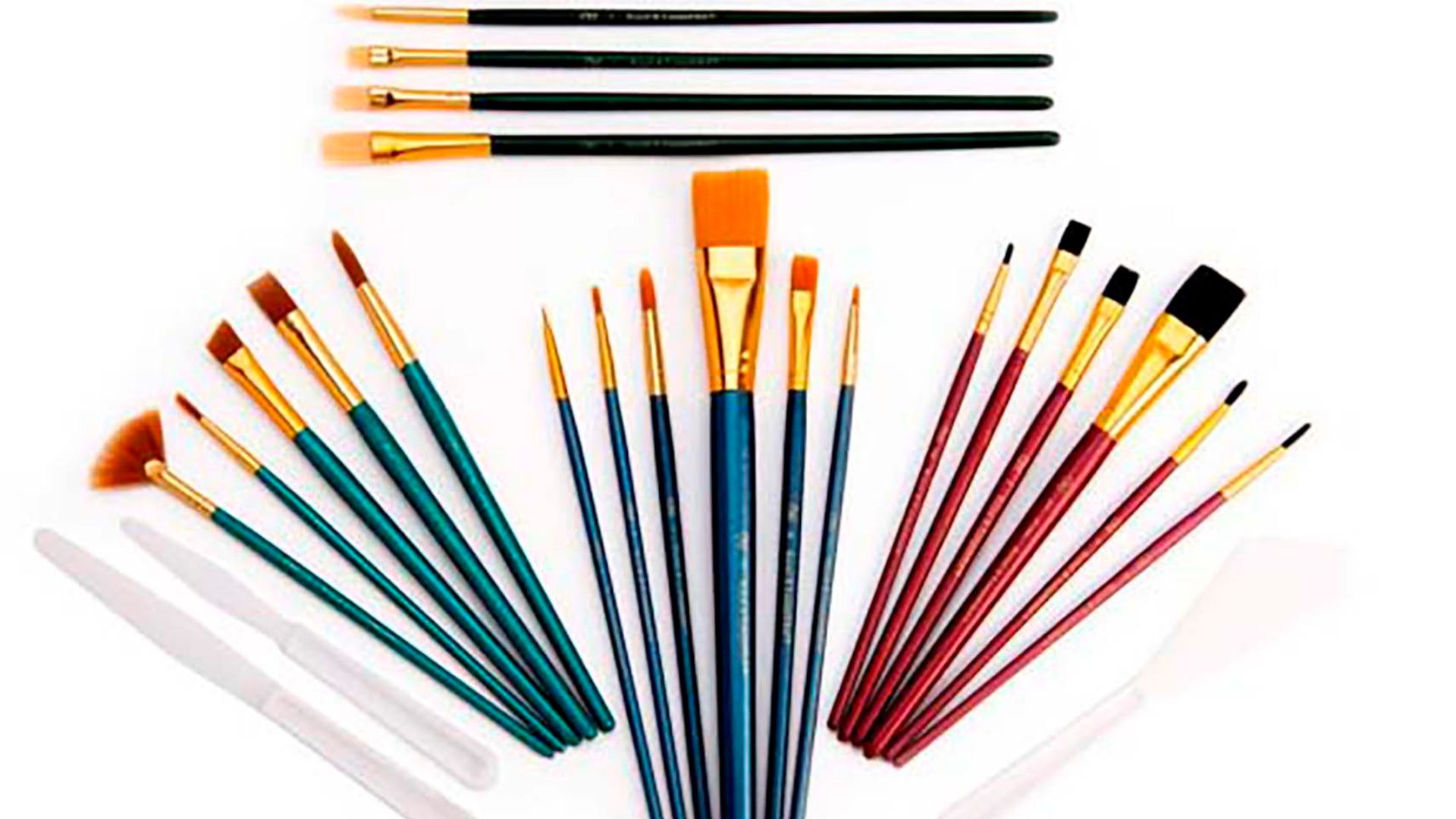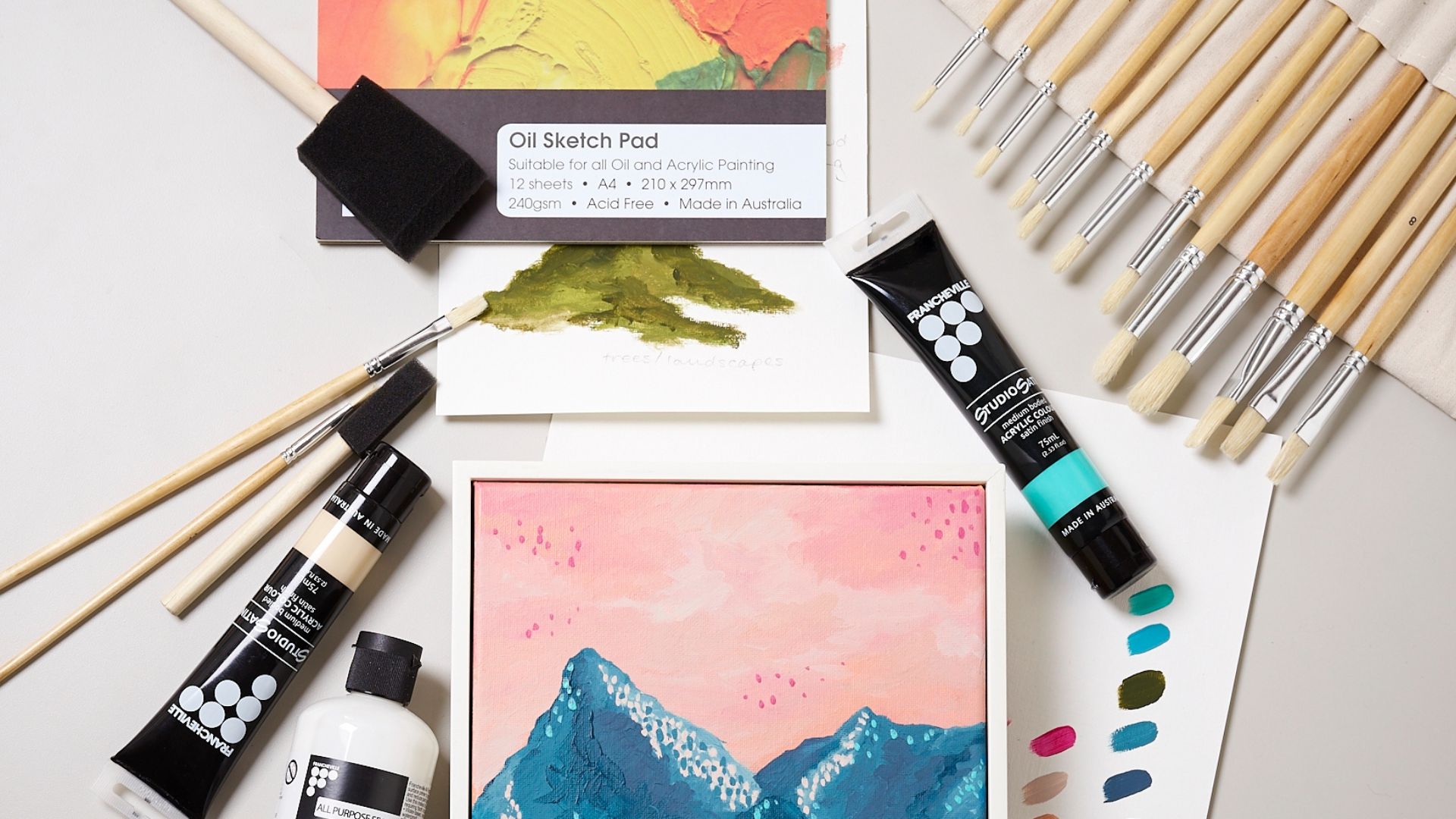 | ||
| Your browser is not supported. | ||
|
Please browse our site using any of the following options:
| ||
Types Of Paint Brushes & How To Choose One

Finding the right paintbrush can sometimes feel like searching for a needle in a haystack - there are so many sizes, materials and shapes to choose from, the choice can quickly become overwhelming!
We have many paint brush types for you to choose from at Spotlight, and to help you make the right choice this blog is going to walk you through everything you need to know to choose the right paintbrush for your next project. From bristle type and shape to how best to clean your paintbrushes, discover the humble paintbrush here!
Quick Links
- The paintbrush
- Types of paint brush bristles
- Paint brush bristle shapes
- Paint brush sizes
- Best paint brush for acrylic paint
- Best paint brush for oil paint
- Best paint brush for watercolour paint
- How to care for your paintbrushes
The Paintbrush
All paintbrushes have three basic components to them - the handle, a ferrule with a crimped base and the bristles. The bristles are what set paintbrushes apart from each other, but how the handle is constructed will affect how comfortable the brush feels, and a poorly-built ferrule will ruin even the nicest paintbrush. If you are serious about your art, it is important to invest in a quality paintbrush - and if you're a casual artist, a quality paintbrush is still worth the effort, as a poor paintbrush can definitely ruin your work.
Types Of Paint Brush Bristles
The bristles are the part of the brush that you load your paint into, and the right brush will hold onto your paint until you begin painting onto canvas, paper or whatever your chosen surface is. Bristles can be made from animal hair or from man-made synthetic bristles. Let's go over the benefits and drawbacks of each!
Natural bristle paint brush types
Natural paint brush bristles are what have been used by the old masters for hundreds of years, and the best animal hair brushes can last you a long time when cared for properly. Animal hair types include sable, ox, camel, horse and even squirrel, with each having its own characteristics and each suiting certain types of paint better than others.
- Sable bristles are made from the hairs of animals in the weasel and mink families and are considered some of the best brushes on the market, which their price will reflect! They are wonderful for watercolours and for painting fine details, and the hairs have a wonderful 'snap' that helps the bristles quickly return to shape after use.
- Squirrel brushes are soft and come to a fine tip, although they aren't as springy as sable brushes. They are best used for applying thin paints like watercolour or inks, as their thin hairs will not be able to carry thicker paints like oil.
- Hog hair brushes are the tools of the trade for oil paint artists, as their durable, springy hairs have 'split' ends that allow them to hold large amounts of thick paint. Good quality hog's hair bristles will soften with time, helping make them more responsive to your brushwork.
- Pony hair brushes are made from the hair of adult horses and are handy for any water-based paints, like acrylic, gouache and watercolour. The bristles are coarse and tough.
- Camel hair brushes aren't actually made from the hairs of the camel - rather, it is a mixture of short, inexpensive animal hairs like rabbit. These brushes should not be used for professional work, and are best suited as children's beginner paintbrushes.
Synthetic bristle paint brush types
Synthetic paint brush bristles are smooth, durable and less expensive than natural hair bristle brushes. Most will be made of polyester, nylon, taklon or a mixture. Synthetic paint brushes are useful for when you don't want to see brush marks in your artwork, as their glossy bristles glide over canvas and paper - plus their ultra-smooth surface won't absorb water like natural hairs can.
Synthetic brushes shouldn't lose hairs at the same rate natural hair brushes do, plus they are easier to clean. However, their smooth surface means the bristles won't hold as much paint as their natural counterpart, so you'll need to keep loading your paintbrush up more often.
Paint Brush Bristle Shapes
The bristles of your paintbrush will be shaped in a way that allows you to perform certain strokes and create certain effects. Here's a breakdown of the most common paintbrush bristle shapes and how you can use them:
- Round - the jack of all trades when it comes to paint brush types, if you could only ever have one paintbrush shape, this would be the one to choose! Their bristles feature a thick, round base that tapers to a soft tip - this means round paintbrushes can be used to fill in colour or paint finer details to equal effect.
- Flat - if you need to lay down thick lines of colour quickly, the square, long bristles of the flat brush will do the job for you. Flat brushes also feature a straight edge that can be helpful in painting neat, straight lines if needed.
- Bright - similar to the flat brush but with shorter bristles, the bright paintbrush is good for creating short, strong strokes of colour in a heavy pigment. Because they are so short, the stiffness of the bristles can make them a little tricky to work with.
- Filbert - these unique brushes are like a mix of a round and flat paintbrush featuring long straight strands that have been cut to end in a smooth, round top. You can create a number of effects and strokes depending on how you hold the brush and apply it, from scraggly lines to full-bodied strokes.
- Fan - with its wide-set, thin bristles, the fan brush is a useful effect brush that's great for creating texture, blurring colours and creating gradients. Tap the brush near the surface of your paper or canvas to create a small splatter effect, or add highlights in dark areas with a thin application of dry pigment.
- Liner - this brush is like a round brush that has been stretched out. It features long bristle hairs and a thin, rounded tip that can be used for painting fine linework in any paint type. It can also be used for delicate lettering.
- Mop - these thick, rounded brushes are wide and soft, and are often used for applying washes when used with watercolour paint. They can also be used for blending oil paint and softening the edges of otherwise hard objects in your art.
- Angled - this amazing brush is similar in looks to a flat, except the top of it runs at an angle down towards one side. You can quickly transition from thin to thick lines as you paint with an angled brush, which is helpful for painting a lot of natural scenery like ocean waves and mountain skylines.

Paint Brush Sizes
Every manufacturer will have their own range of paintbrush sizes, but the most common sizes you'll find range from 000 (very small) to 30 (thick and long). If you find a brush that has sizing like 20/0 or 10/0, these are very small brushes under the 000 size that are extremely thin and good for detail work.
If you find a brush size you love in one brand, it is always good to test the same-sized brush from another brand in person before buying, as it may feel different in your hand.
Best Paint Brush For Acrylic Paint
Because acrylic paint is water-based, you will be cleaning it every time you need to change colours. Constant wetting can be harmful over time for natural hair brushes, so we believe the best paint brush for acrylic paint will be a synthetic one! Their durable bristles can withstand being left in water, plus their smooth surface means they won't leave brush marks on your artwork. Round, flat and angled brushes are all useful choices for working with acrylic.
Best Paint Brush For Oil Paint
Quality oil paint is thick and weighty, so you need a paintbrush that can do some heavy lifting if you plan to use this medium. As we mentioned above, hog's hair paintbrushes are your best friend when it comes to oil paint, as their strong, durable bristles can be loaded with a good amount of oil paint.
A small synthetic or sable brush can be used for painting finer details, but remember to thoroughly clean your sable brush if you plan to use it with oil paint. Round, bright and flat brushes are strong choices for oil paint, and you can also use a painting knife to apply your colours impasto-style.
Best Paint Brush For Watercolour Paint
While it's an expensive choice, sable hair paintbrushes are the absolute best for watercolour paint, as they hold all the liquid in their bristles without losing their shape and spring. If you need an affordable alternative, synthetic brushes can be used when you need a round brush, while ox or squirrel can be used for a wash brush. Round, mop and filbert paintbrushes are all useful for working with watercolours.
How To Care For Your Paintbrushes
The most important thing you can do for your paintbrushes is to keep them clean. Whether you're deciding how to clean your favourite acrylic paint brush or your roughest and toughest hog hair bristle brush, all brushes need to be treated with a little love and care to keep them in good condition. This means washing between colour changes and when you've finished your painting session. Leaving any kind of paint to dry on your brush is a big no-no, although more forgivable if your medium is watercolour or gouache - these can be washed off in water. Hardened oil or acrylic on the other hand can be almost impossible to get off your brush when dry, and even if you do get it off, your paintbrush may be damaged as a result.
Here are some handy paintbrush care points to always keep in mind:
- Clean your brushes gently! Don't viciously scrub the bristles as this can force them out of shape or even pull them from the ferrule.
- Speaking of the ferrule, try not to get paint on it. If paint hardens on this metal surface it can be very hard to get off, plus paint may pool at the edge of the ferrule where the bristles attach, causing the bristles to spread out of shape.
- Never leave your brush bristle-down in water. This can damage its shape and bristles, and prolonged soaking can even warp the wooden handle and loosen it from the rest of the brush.
- Never use dish soap to clean your brushes - stick to hand soap or special brush-cleaning soaps to ensure the bristles aren't damaged by any harsh chemicals.
How to clean an oil paint brush
Watercolour, gouache and acrylic paint can all be washed off with a little soap and water, but oil paint brushes will need a little something special to keep them clean.
The most common and effective way to clean oil paint brushes is with solvents, like turpentine or some mineral spirits. However these can release some very nasty-smelling fumes, so make sure to clean your oil paint brushes in a well-ventilated area and wear a mask if you're particularly sensitive.
You can also use natural oils to help clean your brushes, with popular oil paint additive linseed oil being one of the best, You can also use safflower, walnut or even baby oil to get the job done. This won't smell as bad as the solvents, plus you'll probably already have these on hand doing double duty as an oil paint additive - but the cleaning process takes a bit longer and is more involved.

Find Amazing Paintbrushes At Spotlight
Now that you know how to treat your paintbrushes right, why not check out Spotlight's range of quality paintbrushes online? With a great selection of payment options and home delivery available, you'll have your gorgeous new paintbrushes in your hands in no time!
You can also visit your local Spotlight store to view the range in person.
Want more painting goodies? Check out our whole range of amazing art supplies, or read this useful buying guide on paintbrushes.




